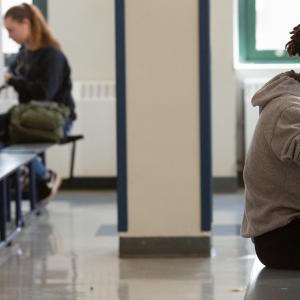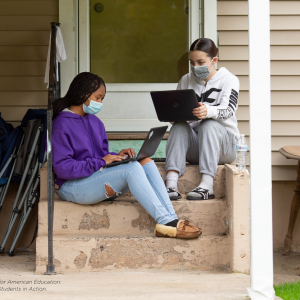Read the To&Through Project's latest op-eds, essays, and updates.
To&Through Project Blog

Amayrani’s Story of Navigating the Post-Secondary Maze
Amayrani is a Latinx, first-generation college student who graduated from a selective enrollment public high school and immediately enrolled in a two-year college. She took two semesters off during the pandemic. Read her story.

Moises’ Story of Navigating the Post-Secondary Maze
Moises is a Mexican American, first-generation college student from West Lawn. He immediately enrolled in a four-year college after high school graduation, transferred to a two-year college, and is currently enrolled in another four-year college. Read his story.

Kiara’s Story of Navigating the Post-Secondary Maze
Kiara is a Belizean American college student from South Shore. She immediately enrolled in an HBCU after high school graduation, transferred to a two-year college, and is currently enrolled in a nursing program at that college. Read her story.

Three Common Myths & Facts About Sophomore Year to Read Before Fall
Nearly half of all off-track sophomores in the 2013–2014 CPS freshman cohort were on-track as freshmen. They graduated from high school at a rate of 43%. Their peers who remained on-track sophomore year graduated at a rate of 93%. Read more surprising research about the sophomore year.

This Fall, Let Building Authentic Relationships With Students Be the Best Incentive
Thousands of schools around the country still use rewards as a central technique despite clear research evidence about their ineffectiveness. When we monetize student behaviors, we create a transactional relationship between students and adults, relying on extrinsic rewards rather than grappling with the deeper question of why we think students need incentives in order to perform well in school. Read more about why — and how — educators across the country are beginning to rethink their rewards systems.

The To&Through Project Summer 2021 Newsletter
Read our summer newsletter to learn about our new research, data tool, and resources ranging from leveraging student voice to unearthing trends in Chicago Public Schools graduates' experiences after high school.

The Humanity of Our Students
As we prepare to welcome all students back to school this fall, it is vital that we learn more about how the last year-and-a-half has affected them. In April, the six schools in the To&Through Middle Grades Network gave their middle grade students an assignment that asked them: “How have you changed and grown since the beginning of the pandemic?” Students’ responses took several different forms: poetry, drawings, playlists, or written reflections to describe their experience. Read their responses.

Illinois must change the way it funds higher education
If Chicago is going to significantly increase the completion rate for all CPS graduates, the next step is to focus on providing more systematic support for CPS graduates with less than a 3.0 GPA. These students, who make up more than half of CPS graduates, don’t always have access to selective schools with high graduation rates, but they are accepted into college, they want to earn certificates and degrees and some do graduate. However, many require additional academic, financial and social supports on campuses.

New Report Busts Four Common Myths About College Completion
The findings from our new report Navigating the Maze: Understanding CPS Graduates' Paths Through College suggest that some long-held beliefs about persisting in and completing college may be incorrect. During the college choice process, adults supporting students should be clear with themselves and clear with students and their families about how CPS students actually move through higher education systems.

Three Implications from Our Report on CPS College Enrollment and Retention During the Pandemic
This blog post provides a high-level summary of findings and implications from our report College During the Pandemic: Immediate Enrollment and Retention of CPS Graduates in Fall 2020.